Artists have a unique struggle when it comes to building a website. They need a modern template that doesn’t distract from their work, and they don’t want to spend days building a site when they could be painting or drawing. Fortunately, you no longer have to choose and can set up an e-commerce site for your art business quickly and easily. What do you need to know about artist websites?
If you want to know where to build your website quickly, we’ve compiled some examples and benefits of the top five website builders. Plus, you’ll get pricing and templates to use.
Make sure your artist website has all of the items you need to connect with buyers in this detailed guide to creating a robust website. Let’s get started!
Where to Build Artist Websites Quickly and Easily
Whether you want a full-screen slideshow, a sleek portfolio, or something in between, there are several website builders out there to help. Customize your artist website as much as you want with these top five options to get you selling faster.
Don’t forget to read our guide on how to sell art online and make money quickly before you start building a new website!
Squarespace
Squarespace is one the best places to turn for an artist website if you don’t have the know-how when it comes to building a website. Their drag-and-drop interface is simple, and there are tons of templates to choose from, specifically for galleries and artists. Plus, it comes with a built-in shop function so that you can start selling your work.
A few examples to inspire you to build your own artist site include:
Templates
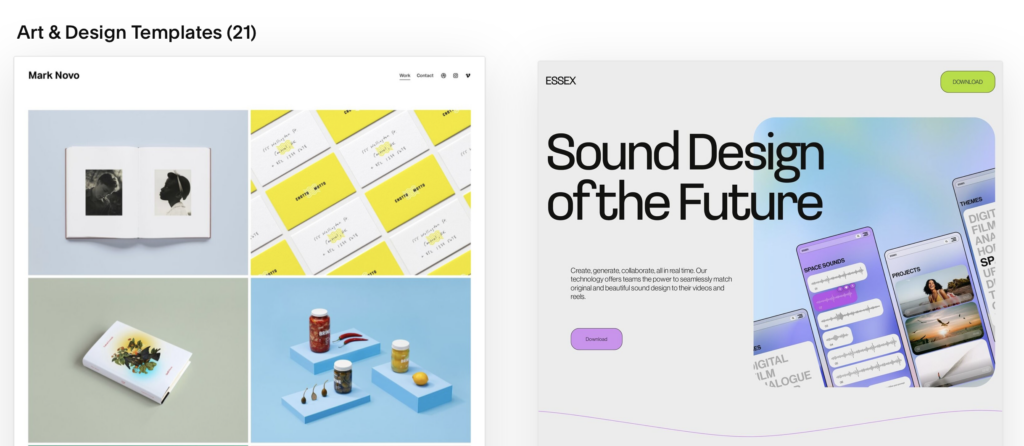
There is no shortage of templates on Squarespace, many of which will make a good artist website. Whether you want to showcase fine art, photography projects, or digital and sculpting techniques, Squarespace has a template for you under their portfolio category.
Some popular options include Sackett, Nolan, Utica, and Lester.
Of course, you don’t necessarily have to use a premade template. You can also custom-build your own website with a template builder.
Pricing
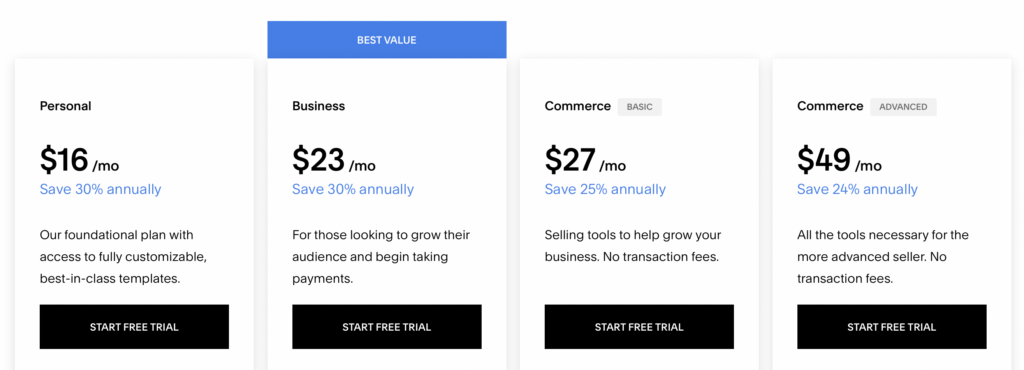
Artists’ websites are a little more expensive on Squarespace compared to platforms like Etsy. However, they aren’t so expensive that they’ll break the bank. Business plans start at $23 per month or $27 per month if you want to add commerce to your gallery.
Shopify
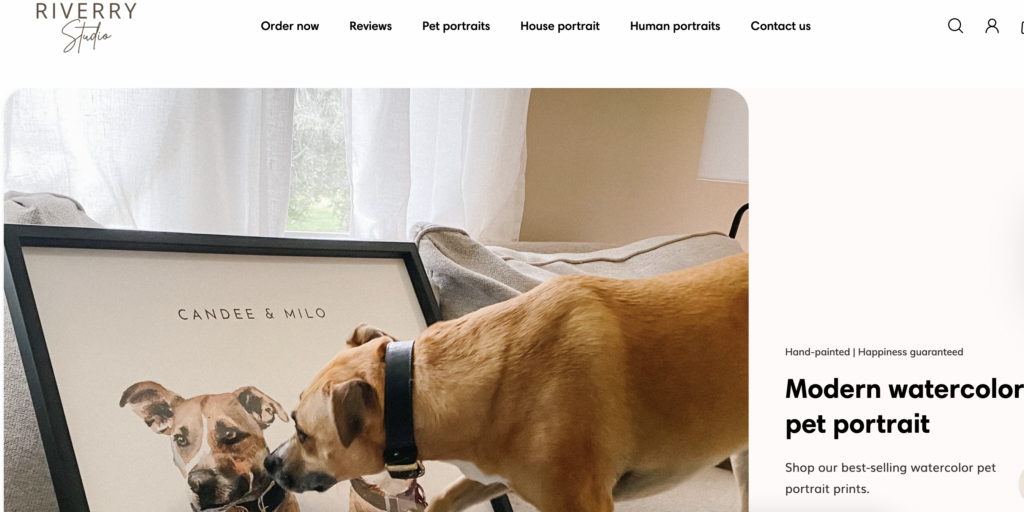
If you know that you want to make an artist website that allows you to sell your creations to a captive audience, then Shopify may be a great fit for you. This all-in-one website builder allows you to utilize their powerful tools for selling, marketing, and managing your overall business.
You even get custom analytics and insights to run customized campaigns.
A few examples of great artist websites on Shopify include:
Check out our detailed Shopify review if you think that this website builder is right for you.
Templates
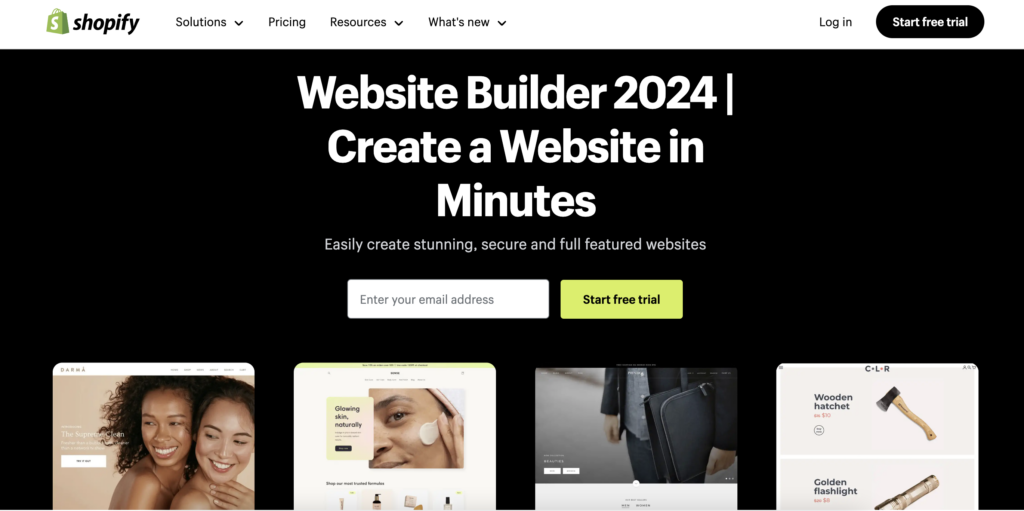
Much like Squarespace, Shopify has an abundance of templates from which you can choose. Some are free (like the Studio template used to build Olivia Serrill Art), while others are paid for a nominal fee. If you want to sell your art online and the free templates don’t suit you, their best artist websites could cost you up to $400.
Their free artist templates include Studio, Publisher, and Craft.
Pricing
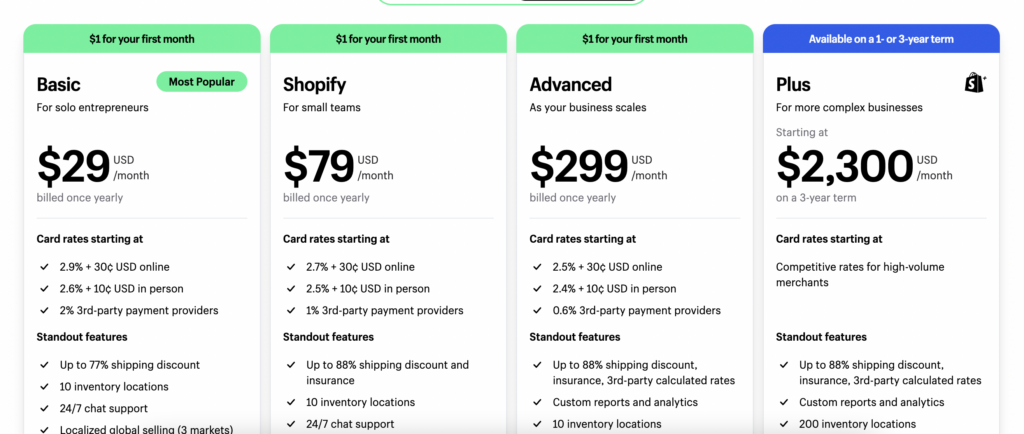
The pricing for Shopify is very much in line with what you would expect from Squarespace. Their plans start at $29 per month for solo entrepreneurs.
Format
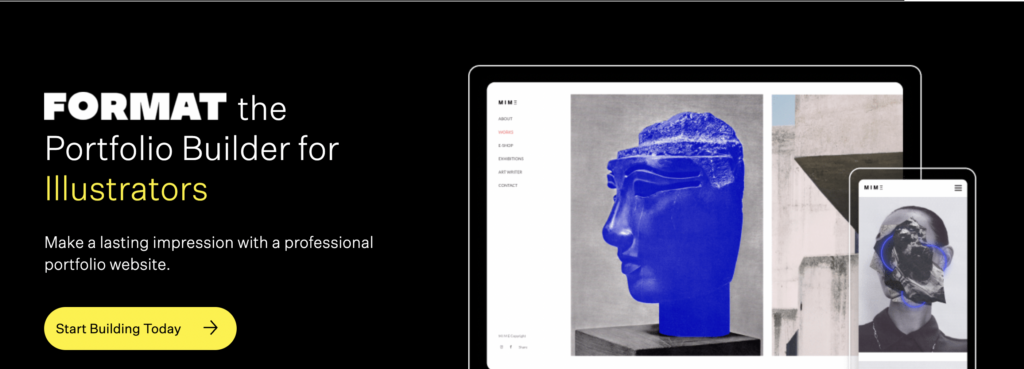
Format is a lesser-known option for building websites geared toward the professional artist. But that doesn’t mean that it isn’t still a great option for anyone seeking a quality artist website! This website builder is used primarily for photographers to showcase their images and start selling prints.
As with Squarespace and Shopify, their website builder is easy to use for any self-taught artist who doesn’t want to spend all their free time building a website. Get back to your art business faster with Format.
A few examples of artist websites include:
Templates
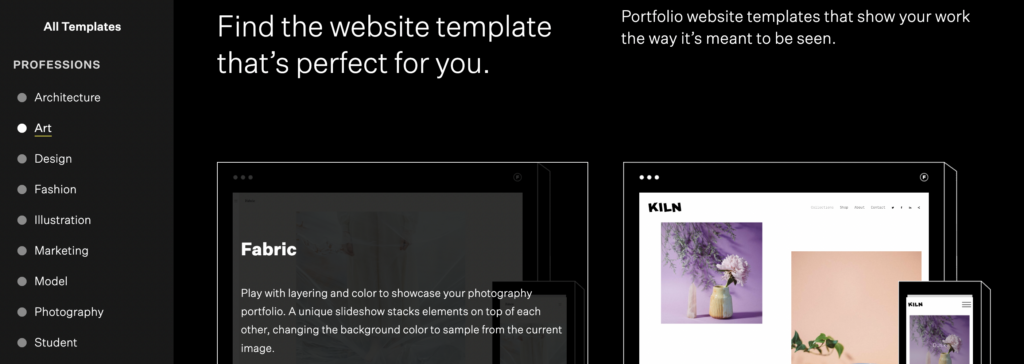
Because this is made specifically for artist websites, there is no shortage of options for how you can build your own site. Filter their templates by your unique medium: art, photography, design, fashion, video, and more. Some of their more popular templates for art include Spruce and Obsidian.
Pricing
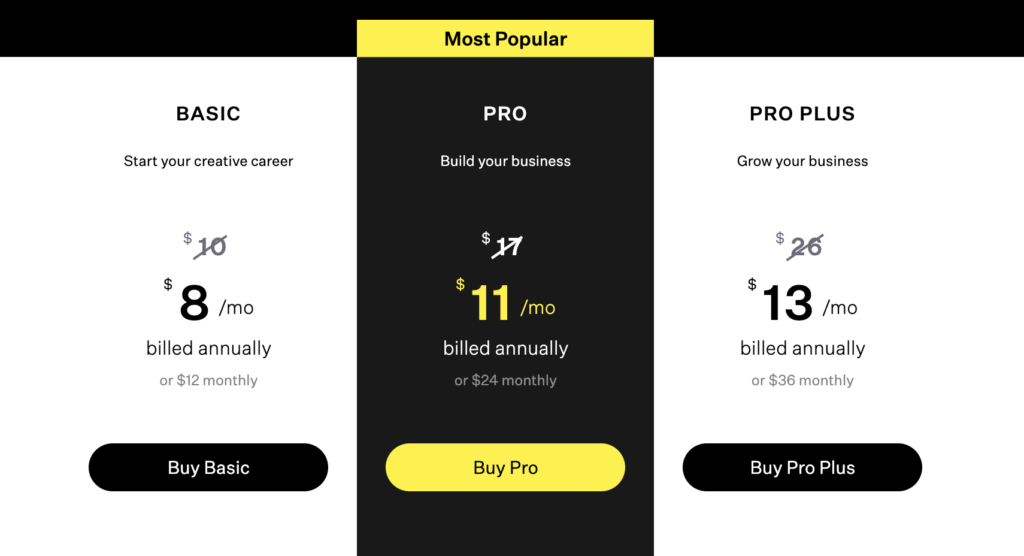
Format is one of the most affordable options for housing an online portfolio. Plans start at just $8 per month and cap out at $13 per month. If you’re on a budget but still want to showcase amazing images, then Format might be the right place for you.
Wix
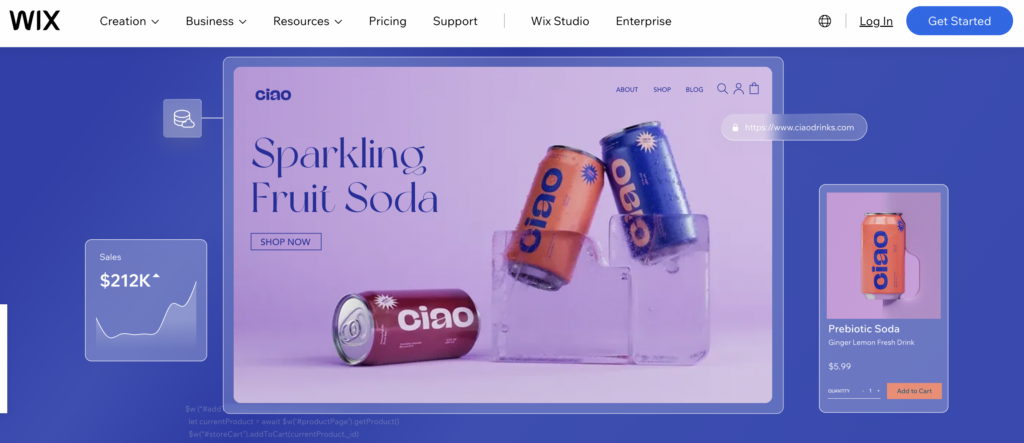
If you want to harness a powerful landing page and create key pages that drive sales, then you may want to consider Wix. This platform is great for creating a visual hierarchy with tons of templates to choose from based on your goals for artist websites. Create a store, portfolio, and more.
Here are some examples of other artists using this platform:
Templates
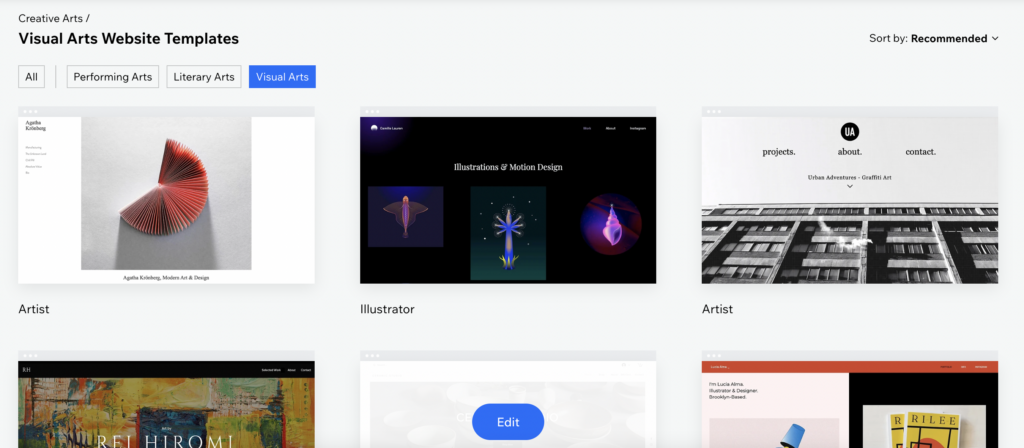
Wix has an abundance of templates that really set this platform apart from other options. Whether you are a graphic designer building your first portfolio page or you create colorful sculptures, you will find a template geared toward your unique business.
Popular templates for art and illustration include some of these models on the following artist sites:
Pricing
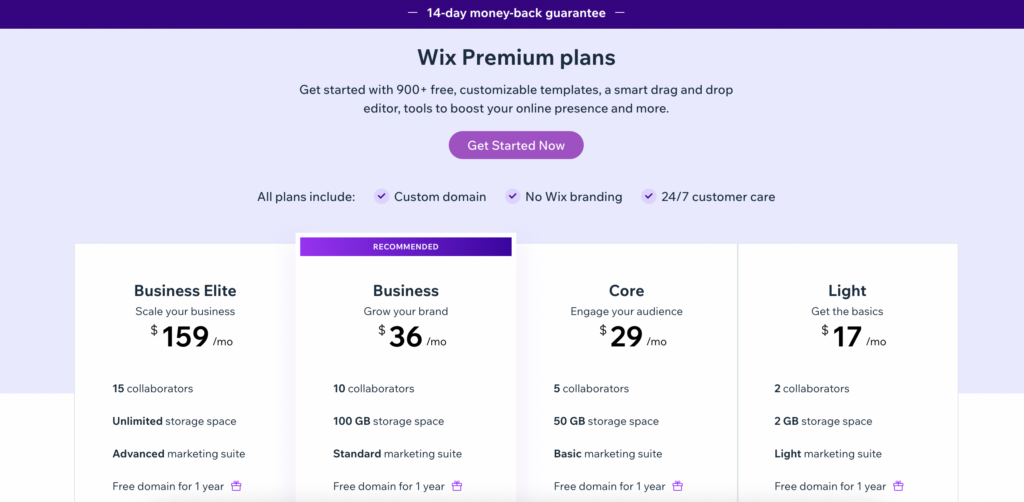
Depending on what you need from your website, Wix can be a very affordable option. Their Light plan starts at just $17 per month, but the most popular plan (Business) will set you back $36 per month.
Etsy
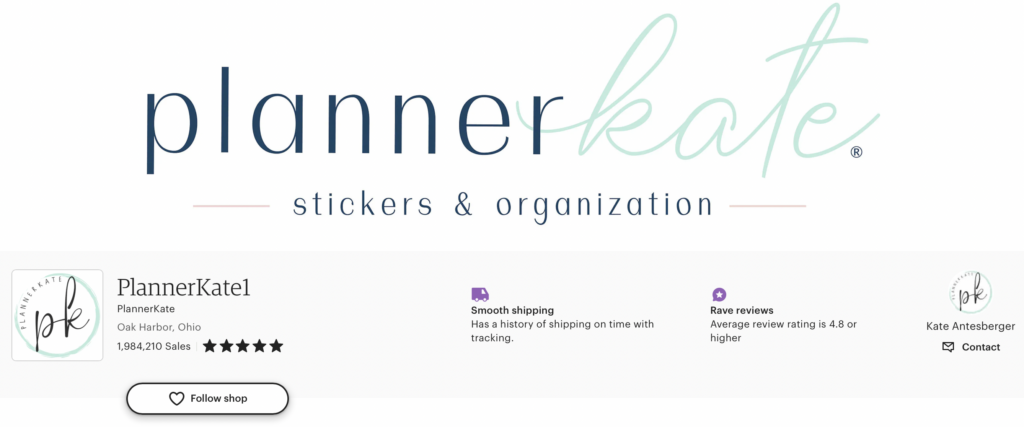
Last but not least, we would be remiss if we didn’t talk about one of the most popular places to house your artist websites. People flock to Etsy to shop for handmade goods. They have a built-in search engine that allows people to find you more easily. Once they do, they can make a purchase directly through the platform.
It’s convenient for customers and easy for you to manage — a win-win all the way around!
Consider some of these popular artist websites when designing your store:
Don’t forget to check out our list of the 26 most profitable Etsy shops to get your creativity flowing!
Templates

The one downside to creating an Etsy artist website is that you don’t have the freedom and flexibility of other website builders. You’ll be stuck with their basic storefront, though you can customize it a bit with a hand-drawn logo, banner image, and great product images.
Pricing
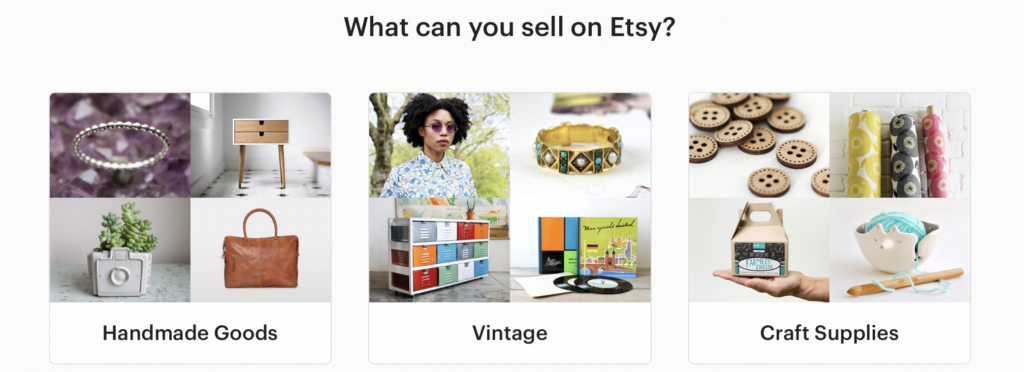
Hold onto your hats because the best part about Etsy is that it’s almost free. You pay a $0.20 listing fee for every item in your store, plus transaction fees and payment processing once you make your first sale. Other than that, it’s a great free artist website for you to explore if you’re on a budget.
Be sure to see our complete guide on how to make money on Etsy here before you get started or consider using it to sell art prints.
What to Include on an Artist Website
When someone lands on your artist website, you need to encourage them to dive deeper quickly. After all, people’s attention span seems to be shrinking day after day. Here are the most important aspects of an artist website that you won’t want to miss.
Artist Bio

People want to know about the person behind the magnificent creations you make. Give them a taste of who you are and why you’re drawn to modern design. Are you a self-taught artist based in a small rural town? Are you a professional who holds an MFA from the world’s most elite art school?
This is the time to advertise what makes you and your art unique. It can be as long or as short as you want. You can even include a photo of yourself so that people can connect with you and feel like they know who you are as a person.
Online Store and Portfolio
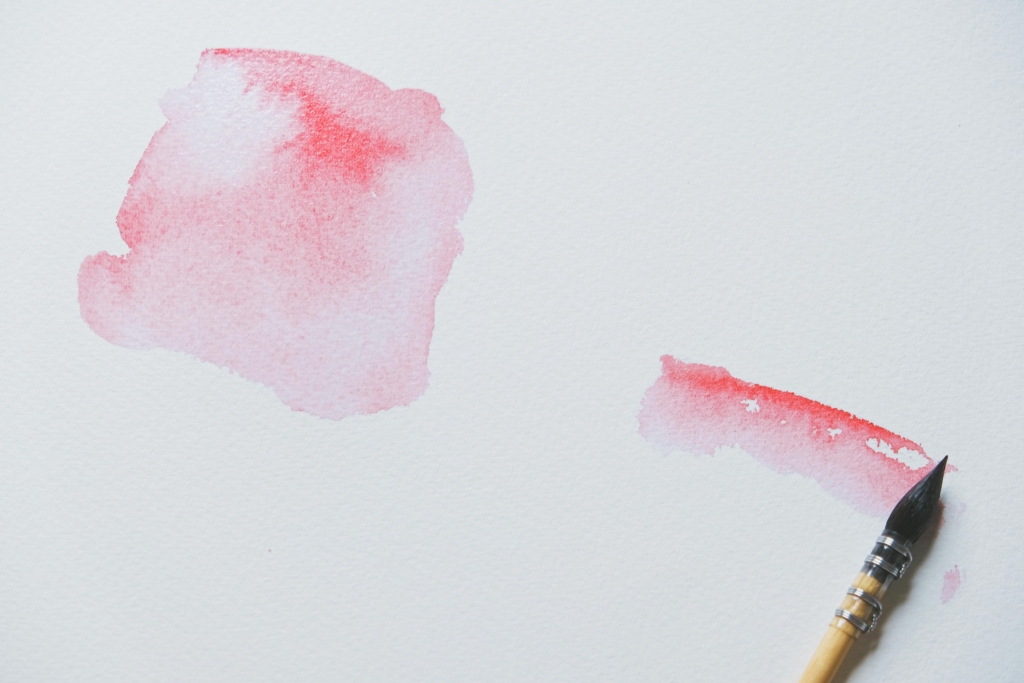
Of course, no artist website would be complete without showcasing what you do. A portfolio is arguably the most important aspect of your site. People care about who you are, but they want to see what you can do. Plus, the only way that they’re going to be able to purchase your work is if they see what you have on display.
This leads us to another point: you might want to set up an e-commerce store for your creations. This allows you to take advantage of powerful payment processing conveniently and safely without having to worry about compliance. Platforms like Squarespace and Shopify are built for this purpose.
Contact Page and Information on Commission Projects

You also need a contact page so that people can connect with you more easily. This is especially true if you offer commission projects where someone can tell you what they want, and you can create it in your unique style. This is a great way to supplement an online store, grow your audience, and earn a steady stream of income.
Even if you don’t offer commission work, a contact page is still essential. People may have questions about a particular work you have listed for sale or may want to talk with you further before making an expensive purchase. Once they land in your inbox, you have a great chance of making a sale!
Don’t forget to link your social media accounts here as well as your contact info!
FAQs
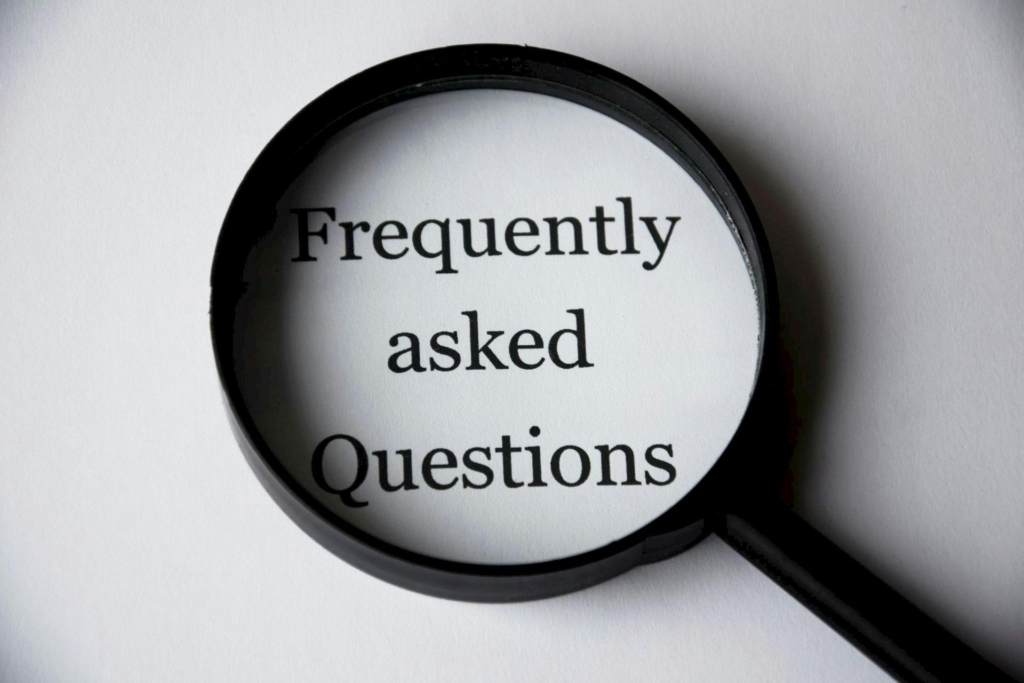
Artists tend to encounter some of the same questions again and again from potential clients. You can put a stop to the endless barrage of emails from your contact page and house the answers to them on your artist website with an FAQ section.
Talk about your process, your pricing, shipping options, gallery displays, and other pertinent details here. It will save you time in the long run when you can refer people back to this page instead of answering their emails one-on-one.
Mailing List Signup for Releases

Last but not least, you need to ensure that you have a way to market to your client list well into the future. The best way to keep in touch with a growing audience of people is to build a mailing list and start email marketing. This gives you a direct connection to people who may want to buy your art.
Plus, they are already qualified since they had to opt in to receive your emails.
Use your mailing list to advertise sales, a new gallery showcase, new pieces of art listed on your shiny new website, or advertise to take on commission projects. These are usually warm leads that can pay huge dividends for your career with minimal marketing budget.
Final Thoughts on Successful Artist Websites?
From the templates you use to the behind-the-scenes functions of a robust website platform, you need an artist’s website that can do it all for you. The platforms listed here are a great place to get started if you aren’t convinced that you need a fully customized (and expensive) website to get started.
Whether you want to handle a growing portfolio or actually sell your art, these options will help you get started quickly and easily today!
